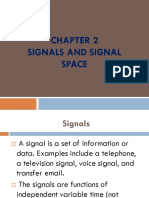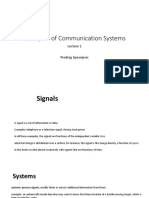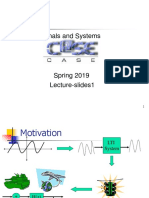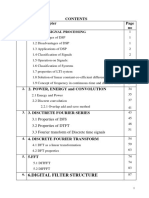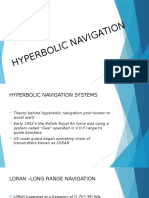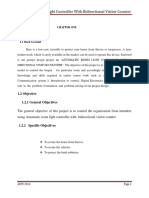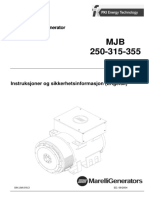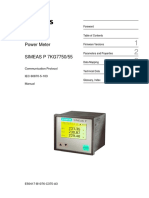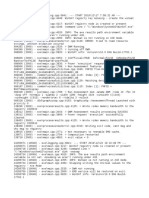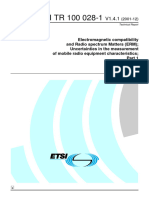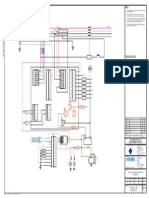ANALOG COMMUNICATIONS
INSTRUCTOR: M.VINOD KUMAR
����Introduction
�Communication System
The transmitter is located at one point in space and its purpose
is to transform the message signal produced by the source of
information into a form suitable for transmission over the
channel.
The receiver has the task of operating on the received signal
so as to reconstruct a recognizable form of the original
message signal and to deliver it to the user destination.
The channel is the physical medium that connects the
transmitter and the receiver. The transmission medium may be
a cable, an optical fiber, or free space if using radio or infrared
communication.
- The source of information: voice, music, pictures, videos, or
data files.
��The Modulation Process
The purpose of a communication system is to deliver a message
signal from an information source to a user destination.
To do this, the transmitter modifies the message signal into a
form suitable for transmission over the channel.
This modification is achieved by means of a process known as
modulation, which involves varying some parameters of a
carrier wave in accordance with the message signal.
The receiver recreates the original message from the transmitted
signal after propagation through the channel using a process
known as demodulation.
�Modulation
Baseband
message
signal
m(t)
Modulator
c(t)
Carrier
s(t)
Passband
(modulated)
signal
�Primary Communication
Resources
In a communication system, there are two primary resources
to be employed:
1. Transmitted Power: The transmitted power refers to the
average power of the transmitted signal.
2. Channel Bandwidth: The channel bandwidth is defined as the
band of frequencies allocated for the transmission of the
message signal.
A general system design objective is to use these two
resources as efficiently as possible.
�The Decibel (dB)
Measure of power transfer:
1 dB = 10 log10 (Pout / Pin)
1 dBm = 10 log10 (P / 10-3) where P is in Watts
1 dBmV = 20 log10 (V / 10-3) where V is in Volts
�Examples of signals: (a) signal with finite energy;
(b) signal with finite power.
Copyright 2009 by Oxford University Press,
��Classification of Signals
1. Continuous-time and Discrete-time Signals
2. Analog and Digital signals
3. Periodic and Aperiodic signals
4. Energy and Power signals
5. Deterministic and Probabilistic signals
A signal that is specified for every value of time t is a Continuous-time
signal
A signal that is specified only at discrete values of time t is a Discretetime Signals
A signal whose amplitude can take on any value in a continuous range is
an analog signal.
A digital signal is one whose amplitude can take on only a finite number
of values.
��Examples of signals: (a) analog and continuous time; (b) digital and continuous time;
(c) analog and discrete time; (d) digital and discrete time.
Modern Digital and Analog
Communication Systems
Lathi
Copyright 2009 by Oxford
University Press, Inc.
�Periodic & Aperiodic signals
Periodic signal of period T0.
A signal g(t) is said to be Periodic if for some positive constant T
g(t) = g(t+T) for all t
The smallest value of T that satisfies the periodicity condition is the
period of g(t).
A signal is Aperiodic if it is not periodic.
�Energy & Power signals
A signal with finite energy is an energy signal
A signal with finite power is a power signal.
g (t )
dt
1
g (t ) dt
T T
P lim
�Deterministic & Random signals
A signal whose description is known completely, either a
mathematical form or a graphical form, is a deterministic signal.
If a signal is known only in terms of probabilistic description
such as mean, variance and so on is a random signal.
�Unit Impulse signal
(t ) 0, t 0
(t )dt 1
(a) Unit impulse and (b) its approximation.
� Multiplication of a function by an Impulse
x(t ) (t ) x(0) (t )
x(t ) (t T )
x(T ) (t T )
Sampling or Sifting property
x(t ) (t T )dt x(T )
�Unit step Function
(a) Unit step function u(t). (b) Causal exponential eatu(t).
�Operations on signals
2x(t)
0.5x(t)
�Y=x(t-2)
� Inner (dot or scalar) product of two real valued vectors g and x as
g , x g . x cos
x Length (norm) of a vector x as
x, x
�Component of a vector along another vector
Approximations of a vector in terms of another vector .
g, x
x, x
Component (projection) of a vector along another vector.
1
x
g, x
�Decomposition of a signal & signal components
� To find C12
t2
f (t ). f
1
C12
(t )dt
t1
t2
t1
f 2 (t ) 2 dt
� Inner product of two N-dimensional vectors g and x as
N
g , x g i xi
i 1
Inner product of two real valued signals g(t) and x(t) both
defined over the interval t1 t 2 as
t2
g (t ), x(t ) g (t ) x(t )dt
t1
Norm of a signal x(t) is defined as
x(t )
x(t ), x(t )
� For the square signal g(t) shown in figure , find the
component in g(t) of the form of sint.
�Complex signal space & Orthogonality
For complex valued signals, the inner product is modified into
t2
g (t ), x(t ) g (t ) x * (t )dt
t1
The energy of the complex signal x(t) over an interval is
t2
E x x(t ) dt
2
t1
The approximation of a function g(t) by a function over an
interval t1 ,t 2
g (t ) c.x(t )
e(t ) g (t ) c.x(t )
t2
E e g (t ) cx(t ) dt
t1
u v (u v)(u v ) u v 2 u * v uv *
*
t2
*
g
(
t
)
.
x
(t )dt
t1
t2
x(t ) 2 dt
t1
Two complex functions are orthogonal if
t2
t2
x (t ) x
1
t1
*
2
(t )dt 0
or
*
x
1 (t ) x2 (t )dt 0
t1
If signals x(t) & y(t) are orthogonal over an interval and if z(t) =
x(t) + y(t)
Ez Ex E y
�Correlation
The amount of similarity between two vectors/signals are
measured by Correlation Coefficient.
The Correlation Coefficient between two vectors is given by
cos
g..x
g x
1 n 1
The Correlation Coefficient between two signals is given by
g (t ) x(t )dt
Eg Ex
1 n 1
�Correlation Functions
The application of correlation to signal detection in a RADAR
unit.
Let the transmitted & reflected pulses be denoted by g(t) and z(t)
If we use directly the Correlation expression to measure the
similarity between g(t) and z(t) then the coefficient is zero
The correlation is zero because pulses are nonoverlapping in time
The integral will yield zero even when pulses are identical but
with relative time shift.
�Cross-Correlation
To avoid the difficulty we compare the received pulse z(t)
shifted by .
The modified integral is called the Cross-Correlation function
of the two complex signals.
gz ( )
g (t ) z (t )dt g (t ) z (t )dt
Auto-Correlation
The correlation of a signal with itself is called autocorrelation
gz ( )
g (t ) g (t )dt
�Orthogonal Vector Space
Consider a three-dimensional Cartesian vector space described
by three mutually orthogonal vectors
g c1 x1 c 2 x 2
g c1 x1 c 2 x 2 c3 x3
ci
g , xi
xi , xi
1
xi
g , xi
�Basis vectors
The vectors x1 , x 2 , x3 represent a complete set of orthogonal
vectors in three dimensional space. Any vector in this space
can be represented in terms of these three vectors. Such
vectors are known as BASIS vectors.
The choice of basis vectors is not unique. The set of basis
vectors corresponds to a particular choice of coordinate
system.
A set of vectors are orthogonal if
xm , xn
0, m n
2
xm , m n
�Orthogonal Signal Space
Orthogonality of a signal set x1 (t ), x 2 (t ), x3 (t ),....x N (t ) over a time
domain is defined as
t2
0, m n
t xm (t )xn (t )dt En , m n
1
A signal g(t) over a time interval can be approximated by a se
t of N mutually orthogonal set as
g (t ) c1 x1 (t ) c 2 x 2 (t ) c3 x3 (t )........... c N x N (t )
t2
Cn
g (t ).xn (t )dt
*
t1
t2
t1
x n (t ) 2 dt
�e N (t ) g (t ) c1 x1 (t ) c 2 x 2 (t ) c3 x3 (t )........... c N x N (t )
If the orthogonal basis is complete, then the error signal
energy converges to zero.
t2
lim e N (t ) dt 0
t1
g (t ) c1 x1 (t ) c 2 x 2 (t ) c3 x3 (t )........... c N x N (t )
N
g (t ) c n x n
n 1
�Exponential Fourier Series
The set of exponentials e jnw t (n 0,1,2............) are orthogonal
over any interval of duration.
0
jnw0t
(e
jmw0t
T0
0, m n
) dt
T0, m n
*
Any periodic signal f(t) can be represented with a set of complex
exponentials as shown below
f (t ) F0 F1e
..... F1e
jw0t
jw0 t
F2 e
F 2 e
Fn
j 2 w0t
j 2 w0t
................. Fn e
......... F n e
f (t )(e
jnw0t *
jnw0t
) dt
jnw0t
(e
) dt
jnw0t
jnw0t
.........
�1. Xn is a complex number and represents component of frequency of
nf.
2. The fundamental frequency is fo = 1/T corresponding to n = 1 All
other frequency components are multiples of this frequency.
3. The amplitude spectrum |Xn| of a real signal is an even function of
frequency, whereas the phase spectrum is odd.
�Average power: is obtained by averaging over one period.
� Find the exponential Fourier series for the signals shown in
figure.
�The Fourier Transform
The Fourier transform for the non periodic signal g(t) is given by
the integral
G( f ) g(t)e j 2ft dt
The inverse Fourier transform G(f) is given by
g(t) G( f )e j 2ft df
�The Fourier Transform - Notations
g(t)
G( f ) Fg(t)
G( f)
g(t) F 1G( f )
��Rectangular Pulse
���Fourier Transform pairs
�Exponential Pulse
�Example: (Linearity)
g(t) e a tu(t) ,
a0
eatu(t) eatu(t)
�������Distortionless Transmission
Transmission is said to be distortionless if i/p & o/p have identical wave
shapes within a multiplicative constant
A delayed o/p that retains the i/p waveform is also considered as
distortionless.
y (t ) kx(t t d )
FT
Y ( w) X ( w) H ( w)
H ( w) ke jwtd
H ( w) k
h ( w) jwt d
d h ( w)
t d ( w)
dw
Y ( w) kX ( w)e jwt d
�Linear time invariant system frequency
response for distortionless transmission.
�Ideal & Practical Filters
Ideal filters allow distortionless transmission of a certain band of
frequencies and suppress all the remaining frequencies.
If the i/p is a signal x(t) band limited B Hz, the o/p is x(t) delayed by
H ( f ) rect ( f / 2 B)e
j 2ft d
td
h(t ) F 1 [rect ( f / 2 B)e j 2ftd ]
a) Ideal low-pass filter frequency response and (b) its impulse response.
For physically realizable system h(t) = 0 for t < 0
One practical approach to filter design is to cut the tail of h(t) for t < 0.
The resulting causal impulse response is
h (t ) h(t )u (t )
Approximate realization of an ideal low-pass filter by truncating its impulse response.
�Signal Distortion over a Communication Channel
Linear Distortion
Signal distortion can be caused over a channel by nonideal CHARCTERISTICS
of either the magnitude or phase or both.
A pulse g(t) band-limited to B Hz as shown below is applied to a LPF with
transfer function H(f). Find the o/p y(t).
(1 k cos Tf )e j 2ft d f B
H( f )
0
y (t ) g (t t d )
k
g (t t d T ) g (t t d T )
2
Pulse is dispersed when it passes through a system that is not distortionless.
�Signal distortion caused by nonlinear Channel
For nonlinear channel the input and output are related by
some nonlinear equation as
y (t ) a o a1 x(t ) a 2 x 2 (t ) a3 x 3 (t ) ................... a k x K (t ) .........
If bandwidth of x(t) is B Hz then bandwidth of
x k (t )is kB Hz.
Hence the o/p spectrum spreads well beyond the input spectrum
and it contains new frequencies which are not there in the i/p
signal.
The i/p x(t) and the o/p y(t) of a nonlinear channel related as
y (t ) x(t ) 0.000158 x 2 (t ) Find the o/p signal y(t) and its spectrum
Y(f), x(t) = 2000sinc(2000*pi*t)
�Signal distortion caused by nonlinear operation
(a) desired (input) signal spectrum
(b) spectrum of the unwanted signal (distortion) in the
received signal
(c) spectrum of the received signal
(d) spectrum of the received signal after low-pass filtering.
�Multipath transmission
A multipath transmission occurs when a transmitted signal
arrives at the receiver by two or more paths of different delays.
� Let us consider the case of only two paths, 1) one with unity
gain and delay t d 2) gain with and delay t t d
H ( f ) e j 2ft d * e j 2f (td t )
sin 2ft
H ( f ) 1 2 cos 2ft exp ( j 2ft d tan
)
1 cos 2ft
�Fading Channels
The time variations of the channel properties arise because of
semi periodic and random changes in the propagation
characteristics of the medium.
Hence the effective channel transfer function varies semi
periodically and randomly , causing random attenuation of the
signal. This phenomenon is known is FADING.
���Base band & Pass band signals
